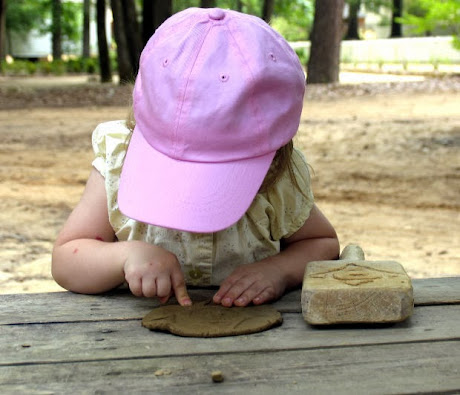
Modeling dough brings smiles and giggles to children because it is fun to play with — but there is so much more to modeling dough than that. As Dr. Montessori told us, play is the work of children and modeling dough, which has a multi-sensory appeal and fosters creative play, provides children with valuable learning experiences.
One of the main goals of the Montessori early childhood environment is the refinement of the senses.
Refining the Senses in a Montessori Environment: Modeling Dough Multi-Sensory Work
Children first learn about their environment through their senses. They touch, taste, smell, watch, and listen to everything. In the preschool years, children refine their senses through Montessori sensorial education, learning to explore, discriminate, and classify their sensorial experiences.
Each Montessori sensorial material focuses on refining the children’s understanding of a specific property: the Thermic Tablets isolate the property of temperature, the Red Rods isolate length, and the Color Tablets isolate color. Building on the work done with the sensorial materials, modeling dough provides children with a multi-sensorial experience. They touch the modeling dough, feel its weight and texture, smell it, and see its colors and shapes all at the same time.

Modeling dough also plays an important part in the Montessori practical life activities. Working with modeling dough increases the children’s dexterity and strength, the fine motor skills necessary for writing. As well, providing children the opportunity for continual play increases their concentration and focus.
According to the National Association for the Education of Young Children (NAEYC), there are a multitude of benefits to working with modeling dough. According to Mallory Swartz, director of special projects at the University of Pittsburgh Child Development Center, these include but are not limited to:
- Persistence
- Reasoning
- Problem solving
- Comparing and contrasting
- Cooperation
- Creativity
- Listening
- Speaking
- Experiencing cause and effect
- Learning about measurement
- Spatial awareness
- Understanding shape and size

Modeling dough and the sense of smell
The sense of smell is complex; humans have over 1,000 different smell receptors that regenerate during a lifetime. The sense of sight, in comparison, only has four kinds of light sensors. (Stafford, 2012) As well, the sense of smell plays an amazing role in memory. Science tells us this may be because the olfactory bulb sits so close to the hippocampus, the portion of the brain responsible for memory.
For me, the scent of manufactured modeling dough is one that lingers deep in my memories. This made me consider the potency that scented modeling dough could have to help children build deeply ingrained memory associations. By providing children with intense sensory stimulation, we can lay the pathways to memory that may aid them later in life.
In your Montessori classroom, present the children with a variety of homemade modeling doughs made with essential oils. Brigitte Keeney of Babes in Deutschland, provides recipes for five unique holiday play doughs that concentrate on some favorite and strong scents of the winter holiday season, including evergreen, spice, cranberries and popcorn, oranges and cloves, and vanilla.
We often think of modeling dough as a tactile and visual material. However, it can be a powerful multi-sensory work that may have lasting effects far into adulthood.
As much as possible, NAMC’s web blog reflects the Montessori curriculum as provided in its teacher training programs. We realize and respect that Montessori schools are unique and may vary their schedules and offerings in accordance with the needs of their individual communities. We hope that our readers will find our articles useful and inspiring as a contribution to the global Montessori community.
© North American Montessori Center - originally posted in its entirety at Montessori Teacher Training on Friday, December 27, 2013.
© North American Montessori Center - originally posted in its entirety at Montessori Teacher Training on Friday, December 27, 2013.


Modeling clay is a great sensorial tool for older students who are in special education classes. Most of these students lack fine motor coordination and this is a fun way for them to help develop these skills.
ReplyDelete